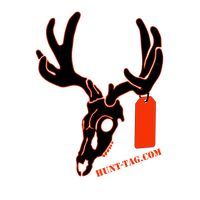
Conservation Through Proper Tagging in Hunting
As hunters, we share a deep connection with wild places and the animals that live there. Many of us are also serious about conservation. We care a lot about the health and future of wildlife.
You might be surprised to know that one of the most direct ways you can help conservation is in those moments right after a successful hunt. The process of tagging in your harvest.
It can seem like a small, tedious step. It's just another rule, right? But properly tagging in your game is powerful.
It's a pivotal part of how wildlife populations are managed and protected across the United States.
So, join us as we explore why your tag is so important.
The Data Behind the Tag
Every time you fill out a tag and report your harvest, you give state wildlife agencies critical information. Think of each tag as an entry in a huge record book that these agencies rely on.
This information, from thousands of hunters tagging in their animals each season, helps biologists understand:
-
Population Numbers. Harvest data is an essential part of figuring out wildlife numbers in different areas.
-
Herd Makeup. Information from tags helps show how herds are structured, like the ratio of males to females or older to younger animals. This shows how well animals are reproducing and their general health.
-
Where Animals Are Harvested. Knowing where animals are taken helps manage hunting pressure. This ensures hunting opportunities can last across different areas.
Agencies like the U.S. Fish & Wildlife Service work with different states to make informed decisions.
For this system to work correctly, every hunter must provide accurate information when tagging in their harvest.
Tagging In for Healthy Herds
So, what do wildlife managers do with all this data from hunters tagging in their game?
They use it to make decisions that directly affect the health and future of wildlife. This information helps them:
Set Hunting Seasons and Bag Limits
Data on past harvest numbers and population trends allow biologists to suggest season lengths and bag limits.
These ensure that harvests are at a level that populations can support. It prevents hunters from taking too many animals and helps populations stay strong.
Manage Specific Hunting Units
If data shows an area needs more protection or could support more hunting, rules can be changed for that specific unit. This careful approach means healthier local herds and, ultimately, better hunting.
Ensure Future Hunting
By managing populations based on good data, we all help make sure that hunting will be around for our children and grandchildren. Your commitment to properly tagging in your animal directly supports this long-term goal.
Tracking Trends and Combating Threats
The information gathered when many hunters are tagging in their harvests also helps watch wildlife health trends.
It can even help fight threats. For example:
Disease Watch
In areas where diseases like Chronic Wasting Disease (CWD) are a concern, harvest data is extremely valuable.
This data, sometimes combined with test samples from hunters, helps track how common a disease is and where it's spreading. This enables managers to create plans to protect herds.
Many state agencies, like Colorado Parks and Wildlife, depend on hunters' help for CWD information.
Understanding Population Changes
Long-term data from tagging helps scientists see how animal numbers change due to things like weather, habitat loss, or other pressures.
This knowledge is fundamental for taking action to conserve wildlife before it's too late.
Every hunter who correctly completes the tagging in process adds to this bigger picture. You give important insights that would be difficult to get otherwise on such a vast scale.
The Ethical Hunter's Contribution
Properly tagging in your harvest is more than just following the law. It's a fundamental part of ethical hunting. It shows respect for the animal, the rules, and the wildlife we all share.
When you take time to fill out your tag correctly and attach it securely, you make sure your information is useful.
Using a reliable, strong tag is critical here.
A tag that smudges in bad weather, tears off easily, or is difficult to read can mean your valuable data gets lost.
As hunters ourselves, we at Hunt-Tag understand this. That's why our Hunt-Tag Kits are made for toughness and clarity. They have features like self-laminating pouches to protect your writing in any condition.
Making sure your tag can be easily read and stays attached means your effort in tagging in your animal truly helps conservation.
Show Your Conservation Colors
Being a responsible hunter means doing your best in all parts of the hunt. This includes everything from your shot to caring for the meat and, yes, to proper tagging.
It's how you actively take part in the North American Model of Wildlife Conservation. This is a system where every hunter plays a critical role.
You can even show your pride and support for responsible hunting through the gear you use. It's a quiet way to show what you believe in. Check out items like our Hunt-Tag SWAG that let you share that commitment.
Your Tag Makes a Difference
Every single time you correctly complete the process of tagging in your harvest, you are an active partner in wildlife conservation. It's a direct link between your love for hunting and the science-based management that keeps wildlife healthy and plentiful.
Ensure your contribution is accurately counted.
Our durable, state-specific, and easy-to-use tags are designed to make this vital step simple and reliable. They help you meet legal requirements while supporting ethical hunting practices that benefit everyone.
Make Your Mark for Wildlife
Choose Hunt-Tag for your tagging needs this season, and know that your efforts support a strong hunting tradition for years to come.




